Hydroponics is a method for growing crops without using any soil, also known as soilless growing, makes sense huh? 🙂
Instead, plants are grown in a solution of water and nutrients. This method of growing can be done with artificial lights (aka grow lights), or plants can be grown hydroponically outdoors as well.
The 7 Types of Hydroponics Systems
There are many different types of hydroponics, each with its own advantages and disadvantages.
1. Nutrient Film Technique (NFT)
One of the most common types of hydroponics is NFT (nutrient film technique). An NFT system involves a growing medium, such as gravel or perlite, through which a nutrient solution is pumped. The roots of the plants are suspended in the air and the nutrient solution flows over them. The solution is then returned to the reservoir.
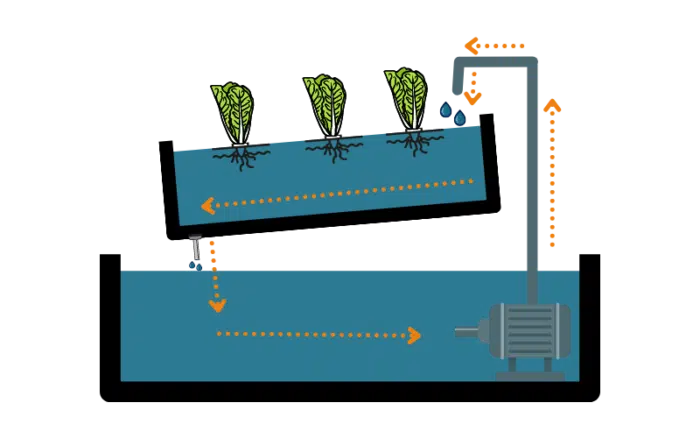
The nutrient film technique was coined by a man named Allen Cooper in 1965. He named it the nutrient film technique because in an ideal setup, the water at the top is more of a shallow stream of nothing more than a “film” of water – thus the name.
This hydroponic method is pretty popular among commercial growers as the maintenance is pretty simple and there are not a ton of ways things can go wrong.
Advantages
The main advantage of NFT is that it is a very efficient method of delivering nutrients to the roots, since there is little or no waste because the water and nutrient solution is being constantly recirculated.
- Little to no waste
Disadvantages
The main downside is that it can be difficult to maintain the proper level of humidity that is around the roots, which can lead to problems such as root rot.
- Easily gets clogged
- A single technical malfunction can cause loss of crop
2. Aeroponics System
Aeroponics is a type of hydroponic system that uses mist to deliver the nutrient solution to the root system of the plants. The plant roots are suspended in the air and the solution is sprayed onto them at regular intervals.
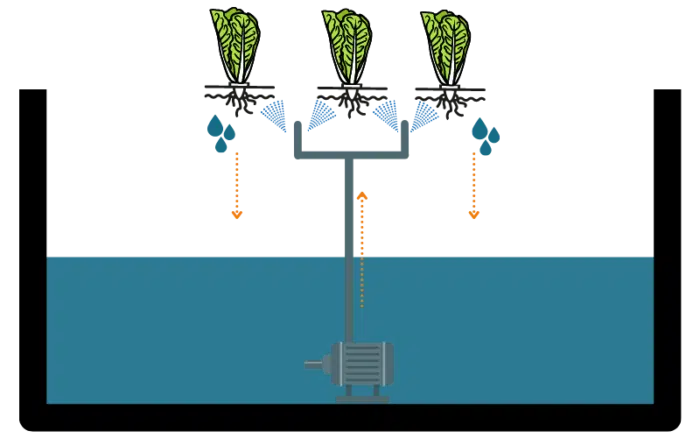
Aeroponic system is actually what NASA uses to help their astronauts grow vegetables in space. It takes up the least amount of space, and uses the least amount of water and nutrients, making it great for a small space and limited resources, like a spaceship.
Aeroponics is also common in vertical hydroponic systems as the water is pumped up to the top of the grow tower, and sprays down onto the roots of the plants.
Advantages
- Small space requirements
- Uses the least amount of water and nutrients
- Roots are exposed to much more oxygen than other methods
- Mostly automated, as it’s set to a timer that sprays the plants roots
Disadvantages
- A little more challenging for beginners to setup
- Sprays can easily get clogged with roots
- If the sprayer nozzles fail, the whole crop can die within hours
3. Drip Systems
Drip system hydroponics is another common type of hydroponics. In this system, the nutrient solution is dripped onto the roots of the plants. The solution is then drained away and returned to the reservoir.
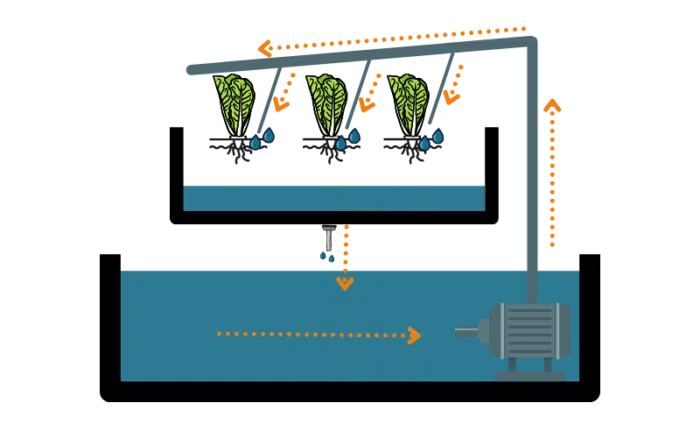
A drip system is considered a type of active hydroponic systems, since a pump is used to deliver the nutrients and water to plants. Because of the way drip works, you have much more control over the ecosystem.
4. Wick System
Wicking systems are one of the simplest types of hydroponic systems. In this system, a wick, such as a piece of rope, is used to transport the nutrient solution from the reservoir to the roots of the plants.
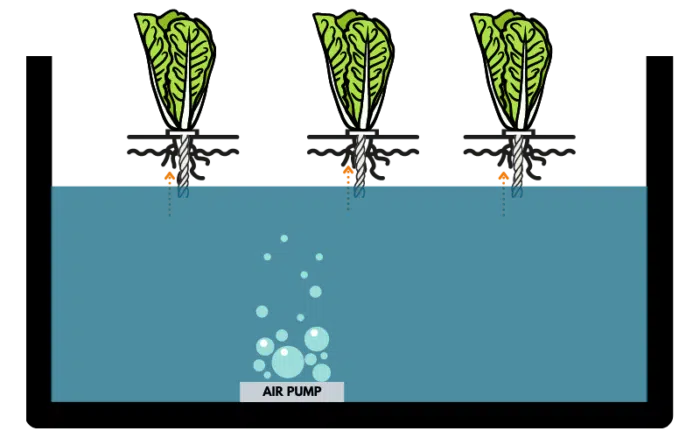
One of the most common wicking systems in something like the Click and Grow indoor garden. Plants grow in what look like cups, and there is a wick at the bottom that sucks up water as needed.
Advantages
- Very easy to manage
- Wicks are easy to replace
Disadvantages
- Don’t work well with larger plants
5. Ebb and Flow System (Flood & Drain)
Ebb and flow systems are another type of hydroponics. In this system, the roots of the plants are submerged in a nutrient solution for a period of time and then the solution is drained away. This cycle is repeated on a regular basis.
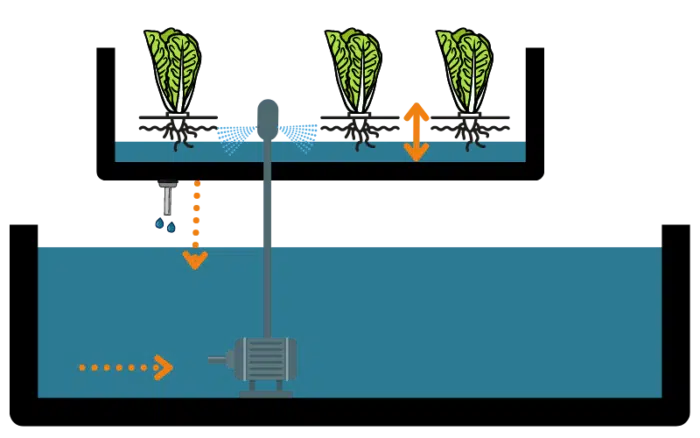
This is very similar to aeroponics, except that the roots are completely submerged for a while, vs an aeroponic system when they just get sprayed with a water and nutrient solution.
Advantages of Ebb and Flow
- Efficiently use water
- One of the more customizable solutions
Disadvantages of Ebb and Flow
- Roots can dry out quickly if environmental conditions are off or the pump or timer fails
- Requires quite a bit of growing medium so the benefit of being soilless is not as prominent
6. Deep Water Culture (DWC)
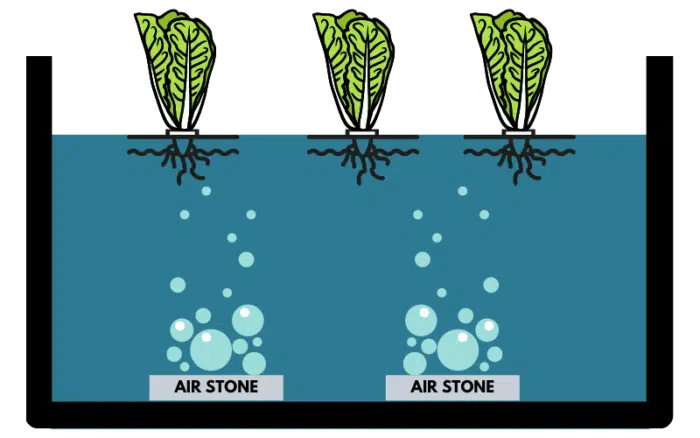
Deep water culture systems are when the roots of the plants are constantly submerged in a nutrient solution and an air stone is placed at the bottom to aerate the water and provide oxygen.
Deep water culture systems are among the simplest hydroponic setups, and they are very popular with beginner hydroponic gardeners. Since it’s just one basin of water, it’s much easier to setup than something like aquaponics or aeroponics.
Deep water culture is considered a passive system as the water and nutrient solution is not being constantly recirculated. An air stone is also needed to circulate oxygen around better.
Related: How to Make a Hydroponic 5-Gallon Bucket (EASY Step-by-Step Tutorial)
Advantages
- Easy to setup for beginners
- Less moving pieces so entire crops are less likely to die if something fails
Disadvantages
- Slower growth than some other methods like aeroponics
7. Aquaponics
Aquaponics is a type of hydroponics that uses fish waste to fertilize the plants. While it sounds gross, it’s actually really smart and is pretty much a closed loop ecosystem.
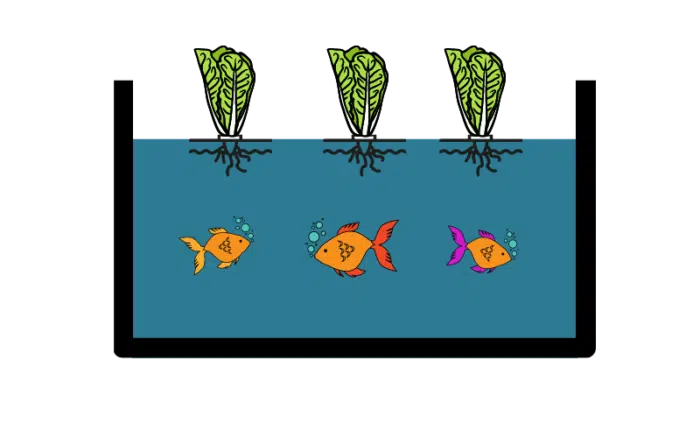
The plants are grown in a bed of gravel or sand and the roots are constantly submerged in the water. The fish wastewater is pumped up to the roots of the plants, and then water is then recirculated back to the fish tank.
The image above is an oversimplified version of what aquaponics is. It’s a very complex system to get setup, but is possibly the easiest one to manage on this list.
Related post: Hydroponics vs Aquaponics vs Aeroponics
The fish don’t need to be directly below the plants, and often times they aren’t. The fish can be a in a tank nearby, and the water with their waste (i.e. nitrogen) is pumped over the bed that holes the plants roots.
So the plants help filter out some of the waste to provide the fish with clean water, and the fish waste provides the essential nutrients for the plants to grow.
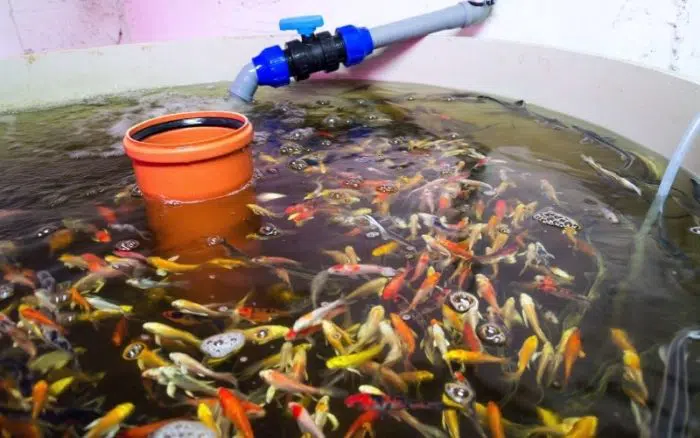
Advantages
- In general, you just have to focus on feeding the fish, and the rest of the ecosystem works
- You are also raising fish, so you get more than plants out of the deal
Disadvantages
- Requires a lot of knowledge of aquatic life
- There are a lot of moving pieces to keep intact
Hydroponic gardens can be small or large, indoors or outdoors. They can be simple or complex. The type of hydroponics you choose will depend on your needs and preferences.
Which type of hydroponics is best?
When thinking about the types of hydroponic systems that work best for you, you’ll need to think about the following:
- Your spatial requirements (mason jar hydroponics might be a good place to start if you have limited space)
- How much time you have to put into building the system
- How much knowledge you have around fish
- What types of plants you’re looking to grow


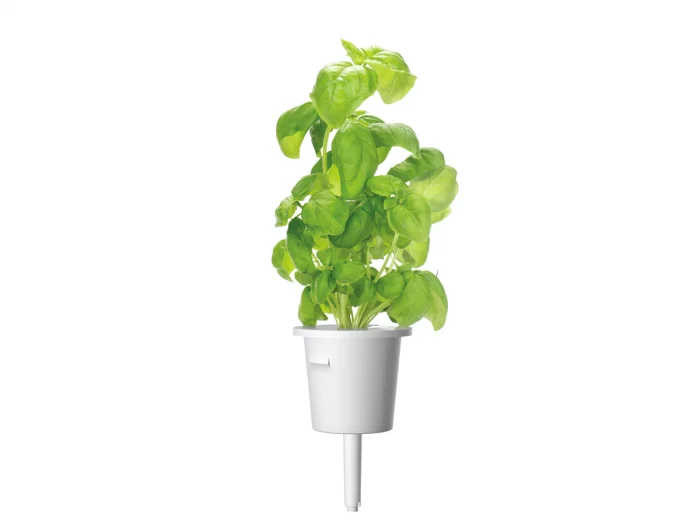

excellent site about the basics of each system. thank you!